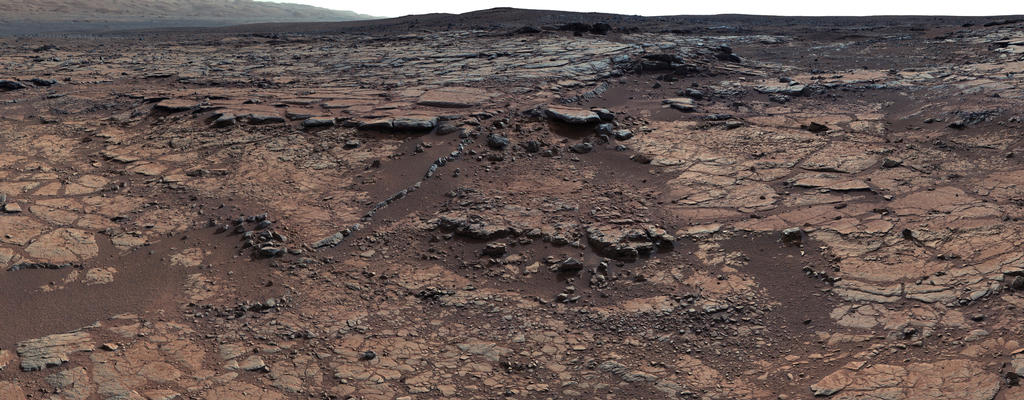
The subject of water on Mars is one of the most highly debated in planetary science; various missions have provided ample evidence that the planet used to be a lot wetter than it is now, with rivers, lakes and maybe even oceans. Most scientists now generally agree on this, but as to how much water there was, how long it lasted and how warm the environment was, is another question. There have been apparent conflicting lines of evidence, and now findings from the Curiosity rover have only added to the mystery. Curiosity has revealed a paradox of sorts – it has found abundant evidence for ancient lakes in now-dry Gale crater, but at the same time has not found evidence for a previous thicker atmosphere with more carbon dioxide, which normally would be needed for water to remain liquid on the surface. These two lines of evidence seem to contradict each other, so how to resolve this puzzle?
The problem is rooted in the fact that at this time in Mars’ early history, about 3.5 billion years ago, the Sun was about one-third less hot than it is today; with Mars farther from the Sun than Earth, this would have made it difficult for Mars’ surface to remain warm enough for liquid water. But all over the planet there are ancient riverbeds, ancient lakebeds (Curiosity is in one right now) and the possible shorelines of an ancient northern ocean (another topic of much debate). How can these two scenarios be reconciled?
One of the leading theories has been that Mars had a much thicker atmosphere of carbon dioxide than it does now, which would have acted like a greenhouse. Mars’ atmosphere is still mostly carbon dioxide today, but it is much, much thinner.
New findings from Curiosity however have thrown a wrench into that idea. The rover has found that the bedrock it has been studying used to be on a lake bottom. Gale crater itself was once filled with a lake or series of lakes. But, those same rocks also showed no evidence for carbonate minerals, meaning that the atmosphere was lacking in carbon at the time.
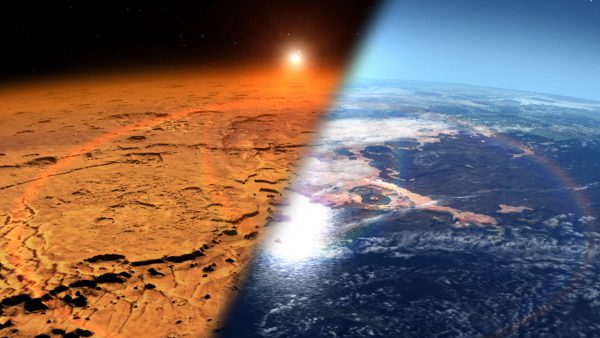
“We’ve been particularly struck with the absence of carbonate minerals in sedimentary rock the rover has examined,” said Thomas Bristow of NASA’s Ames Research Center, Moffett Field, California. “It would be really hard to get liquid water even if there were a hundred times more carbon dioxide in the atmosphere than what the mineral evidence in the rock tells us.”
Two primary factors can affect how much surface there may have been on Mars – the amount of energy coming from the younger Sun at the time, and the thickness of the atmosphere. There is evidence, from isotopic ratios, that the Martian atmosphere was indeed denser back then, but theoretical models suggest that it still would have been difficult for that atmosphere to allow liquid water on the surface for long periods of time (in millions of years).
Scientists had thought they would find more carbonates on Mars than they have. On Earth, carbon dioxide combines with positively charged ions such as magnesium and ferrous iron to form carbonate minerals. So with all that liquid water, there should be carbonate deposits left behind. But for two decades now, orbiting spacecraft have not found those deposits yet, only much lesser amounts than anticipated.
“It’s been a mystery why there hasn’t been much carbonate seen from orbit,” Bristow said. “You could get out of the quandary by saying the carbonates may still be there, but we just can’t see them from orbit because they’re covered by dust, or buried, or we’re not looking in the right place. The Curiosity results bring the paradox to a focus. This is the first time we’ve checked for carbonates on the ground in a rock we know formed from sediments deposited under water.”
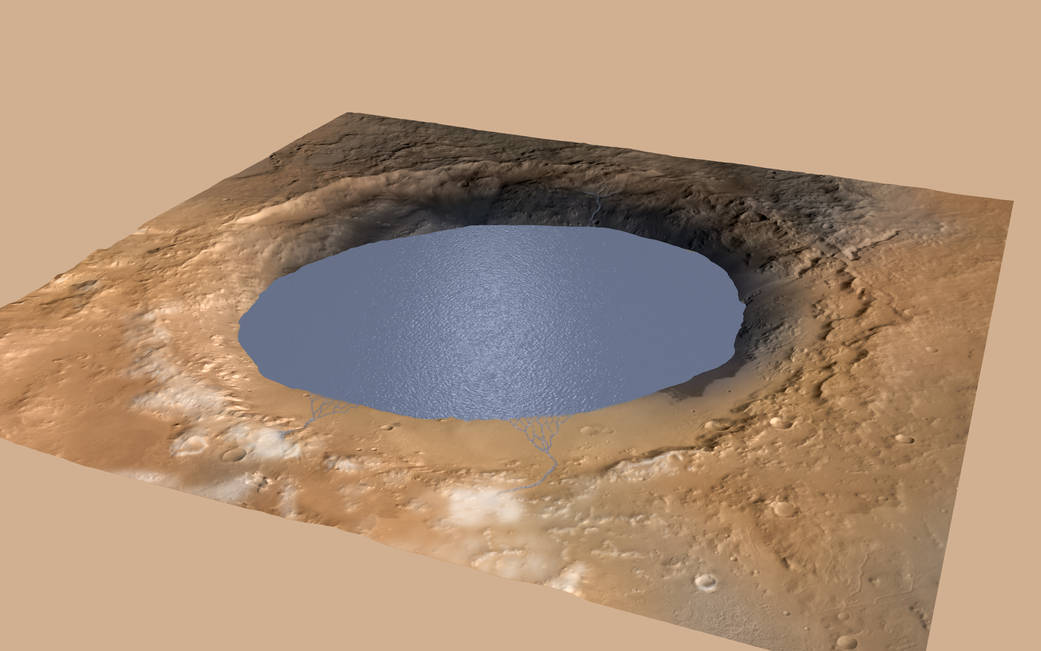
The Gale crater lake should have produced enough carbonate to be detected by the rover. The results, however showed that only a few tens of millibars of carbon dioxide must have been present at the same time as the lake.
Other theoretical models had suggested that the Martian atmosphere was never warm enough for liquid water.
“This analysis fits with many theoretical studies that the surface of Mars, even that long ago, was not warm enough for water to be liquid,” said Robert Haberle, a Mars-climate scientist at NASA Ames and co-author of the new paper. “It’s really a puzzle to me.”
But, again, we know that there used to be abundant water on Mars. So how could there have been liquid water with not enough carbon dioxide to keep the atmosphere warm and thick enough?
One possibility is that there was a denser carbon dioxide atmosphere, but containing molecular hydrogen. That still leaves the question of the missing carbonates however. Scientists are trying to come up with other solutions.
“Some think perhaps the lake wasn’t an open body of liquid water. Maybe it was liquid covered with ice,” Haberle said. “You could still get some sediments through to accumulate in the lakebed if the ice weren’t too thick.”
That might work, although Curiosity has not yet found any evidence that the lake was ice-covered, such as large, deep cracks called ice wedges, or “dropstones,” which become embedded in soft lakebed sediments when they penetrate thinning ice. Curiosity has recently found, however, what appear to be mud cracks in slabs of mudstone rock, left over on the ancient lake bottom from when the lake was drying out in the changing surface conditions.
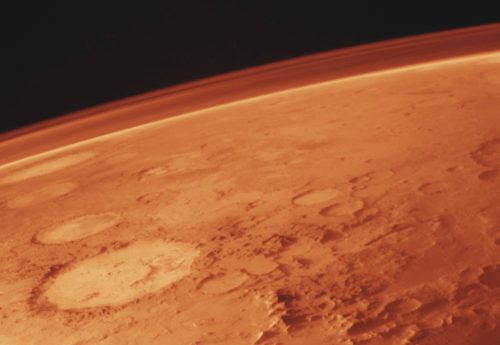
“Even from a distance, we could see a pattern of four-and five-sided polygons that don’t look like fractures we’ve seen previously with Curiosity,” said Curiosity science team member Nathan Stein. “It looks like what you’d see beside the road where muddy ground has dried and cracked.”
“Curiosity’s traverse through streambeds, deltas, and hundreds of vertical feet of mud deposited in ancient lakes calls out for a vigorous hydrological system supplying the water and sediment to create the rocks we’re finding,” said Curiosity Project Scientist Ashwin Vasavada of NASA’s Jet Propulsion Laboratory in Pasadena, California. “Carbon dioxide, mixed with other gases like hydrogen, has been the leading candidate for the warming influence needed for such a system. This surprising result would seem to take it out of the running.”
Another possibility, as reported last month, is that bursts of methane may have helped to keep the early Martian atmosphere warm enough for water. According to the researchers, “interactions between methane, carbon dioxide and hydrogen in the early Martian atmosphere may have created warm periods when the planet could support liquid water on the surface.”
“Early Mars is unique in the sense that it’s the one planetary environment, outside Earth, where we can say with confidence that there were at least episodic periods where life could have flourished,” said Robin Wordsworth, assistant professor of environmental science and engineering at Harvard John A. Paulson School of Engineering and Applied Sciences (SEAS), and first author of the paper. “If we understand how early Mars operated, it could tell us something about the potential for finding life on other planets outside the Solar System.”
That report also notes that carbon dioxide alone probably wasn’t enough to keep the atmosphere warm.
“You can do climate calculations where you add CO2 and build up to hundreds of times the present day atmospheric pressure on Mars and you still never get to temperatures that are even close to the melting point,” said Wordsworth.
The researchers also speculate that there may have been significantly more methane in the atmosphere which would have been slowly converted to hydrogen and other gases – a process similar to what is happening today on Saturn’s moon Titan. Hydrogen could also have contributed to keeping Mars’ early atmosphere warmer, an idea first proposed by Carl Sagan.
“When you’re looking at exotic atmospheres, you can’t compare them to Earth’s atmosphere,” said Wordsworth. “You have to start from first principles. So we looked at what happens when methane, hydrogen and carbon dioxide collide and how they interact with photons. We found that this combination results in very strong absorption of radiation.”
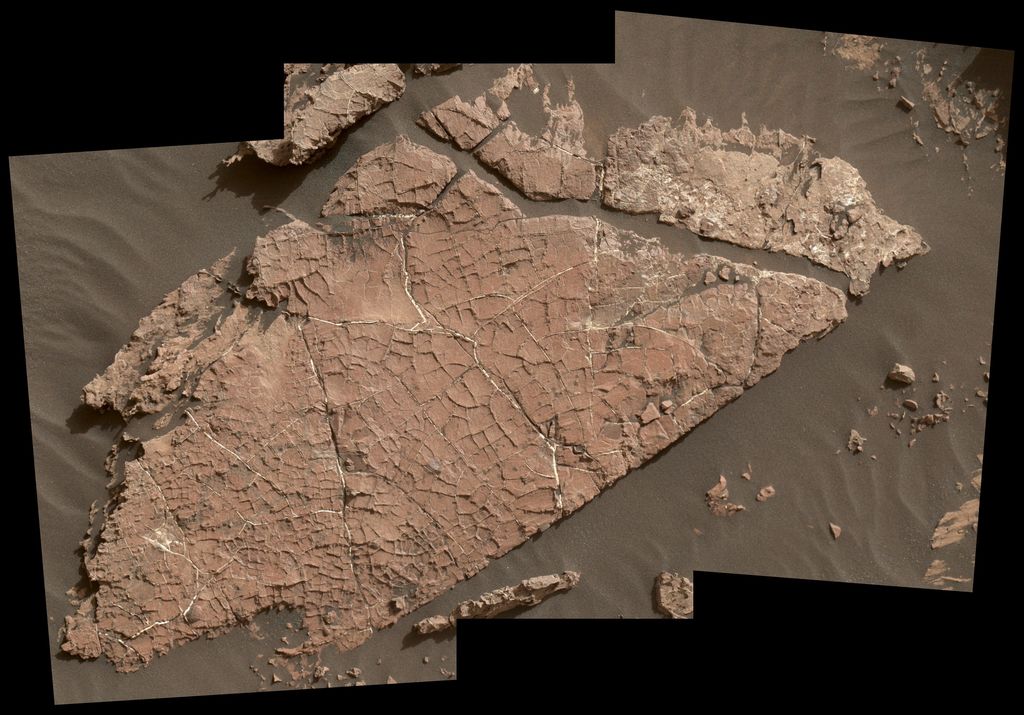
“This research shows that the warming effects of both methane and hydrogen have been underestimated by a significant amount,” Wordsworth added. “We discovered that methane and hydrogen, and their interaction with carbon dioxide, were much better at warming early Mars than had previously been believed.”
This kind of complex atmospheric chemistry could also have had implications for possible life.
“One of the reasons early Mars is so fascinating is that life needs complex chemistry to emerge,” said Wordsworth. “These episodes of reducing gas emission followed by planetary oxidation could have created favorable conditions for life on Mars.”
Methane on Mars is itself another intriguing mystery, since the gas, on rocky planets like Earth, can be produced either geologically or biologically. Most of Earth’s methane is produced by living organisms, but whether that is or was ever true for Mars is still unknown. The gas has been detected in very small amounts in Mars’ atmosphere by both orbiters and Earth-based telescopes, as well as the Curiosity rover itself. There is also evidence from Curiosity for much more oxygen in the Martian atmosphere in the distant past and widespread organics on the surface today.
The new results from Curiosity have provided new clues to this long-standing paradox, but have also raised more questions. Mars’ climatic and geological history is complex, and only further investigations will shed more light on how a previously benign and habitable environment became the colder, drier one we see today.
More information about the Curiosity mission is available here.
Be sure to “LIKE” AmericaSpace on Facebook and follow us on Instagram & Twitter!




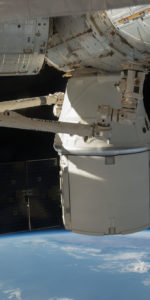

What about all of the gases from volcanic activity y
There are lots of questions about water beyond our Earth.
Closer to the Home Planet we have:
“Yanhao Lin and colleagues from the University of Amsterdam in the Netherlands claim in a recent paper that the early Moon was rather wet, containing at least 0.3 to 1.7 percent water at the time the liquid magma covering its surface crystallized, which happened shortly after the Moon formed. This could equate to water ocean depths of 0.5 to 3 kilometers, assuming that the water was retained for some period of time.”
And, “More recent work, however, together with the finding of clay (usually taken as evidence of contact with liquid water) within Apollo lunar samples, calls into question how dry the Moon really was immediately after its formation. Was there liquid water standing in some impact craters for extended time periods? Might there even have been a limited water cycle? If so, it certainly was short on a geological time scale, but how short exactly?”
From: ‘The Moon May Have Had Lots of Water in the Distant Past
And that raises its interest to astrobiologists.’
By Dirk Schulze-Makuch January 25, 2017
At: http://www.airspacemag.com/daily-planet/moon-may-have-had-water-distant-past-180961906/